Building of the Day: 666-668 Nostrand Avenue
Brooklyn, one building at a time. Name: Mixed use commercial/residential buildings, once residential Address: 666-668 Nostrand Avenue Cross Streets: Prospect Place and St. Marks Avenue Neighborhood: Crown Heights North Year Built: Before 1880 Architectural Style: Vernacular Victorian Gothic with later additions Architect: Unknown Landmarked: No The story: Nostrand Avenue is one of the great thoroughfares of…
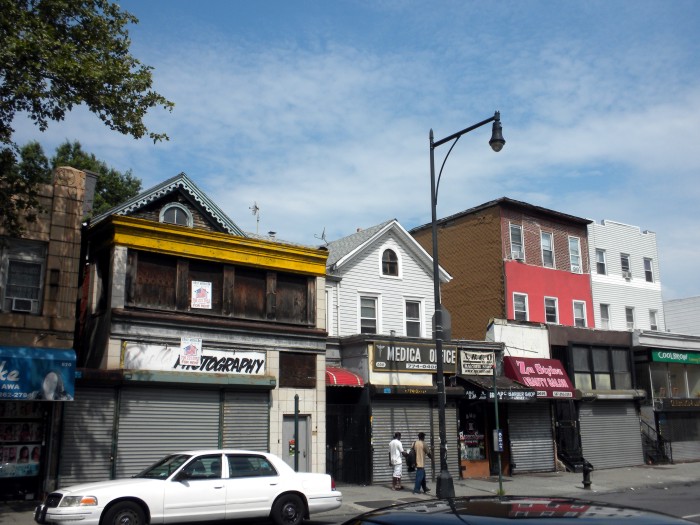

Brooklyn, one building at a time.
Name: Mixed use commercial/residential buildings, once residential
Address: 666-668 Nostrand Avenue
Cross Streets: Prospect Place and St. Marks Avenue
Neighborhood: Crown Heights North
Year Built: Before 1880
Architectural Style: Vernacular Victorian Gothic with later additions
Architect: Unknown
Landmarked: No
The story: Nostrand Avenue is one of the great thoroughfares of Brooklyn, running south from Flushing Avenue in Williamsburg to Sheepshead Bay. It was originally called Nostrand Lane, and is named for the Van Nostrand family, one of Brooklyn’s oldest Dutch families. The road opened in 1840, and although it developed into a commercial corridor, it wasn’t always such, and free standing homes and row houses can be found all along its route. The area known today as Crown Heights did not see great development until the late 1880s, and here, Nostrand Avenue cut through an area populated by large wood framed mansions and homes constructed in the 1870s; when the neighborhood was considered a quiet suburban retreat.
Of course, records from this time are scarce. Looking at the maps, the houses appear in the 1880 map, alone on the block except for two other pairs of houses a couple of lots away, now replaced by bricks and mortar buildings. By 1888, the block has filled out, but interestingly, the development has mostly been on the western side of the street, while large parcels have filled out with mansions on large lots on the eastern side. This is the beginning of the St. Marks District, and St. Marks Avenue is already filled with mansions on large plots.
By 1895, these two row houses, twin vernacular Victorians, were still homes. The Eagle tells us that Delia Wilkerson lost 666 Nostrand Avenue in foreclosure to Robert Bogardus. That’s the house on the right in the photograph. The property was described as a two story frame house on a lot 25×100 feet. By 1904, the property was a boarding house, and by 1920, this address was a shop called A. Ricca, selling fine handkerchiefs and other linen goods.
Meanwhile, next door, 668, which still has its original unpainted clapboard attic story, complete with original pierced wood bargeboards, was still a private home in 1884. In 1912, it was the home of Mrs. Sarah M. Kellogg. She died of apoplexy here at home at the age of 90. For many years she had been a director at the Brooklyn Home for Old Aged Men and Couples, which was on Park Place at Classon Avenue. She was probably the last person to actually live here. The extension on this house looks to be from the late 1920s, but it’s really hard to tell, it’s in such bad shape. At any rate, ads show a dance studio here in 1948. The McElroy Dance Studio taught toe, tap, ballroom and “athletic dance.” Perhaps the dance studio was on the upper floor, with the large windows?
As the years went by, this part of Nostrand became a street of busy shops; with banks and restaurants, and the full gamut of retail shops; from butcher shops to bakeries, to shoe stores, hardware stores, insurance agents, fur shops and jewelry stores. As the 20th century rolled on, these two stores, unlike most of Nostrand’s wood framed buildings, were inexplicably never torn down; instead they had retail store extensions built in the front yards, stretching to the street. 666’s extension was only one story, and looks earlier than 668’s which had two. The tax photo from the 1980s shows 668’s upper windows still intact.
Over the years, more and more desecration has been performed on these poor buildings, and today, like buildings sinking into the ground, only the attics and rooflines remain as a reminder of their suburban past. The prognosis for these buildings is not good. They are not good candidates for rehab, and being wood-framed, they will eventually be torn down, and probably replaced by buildings that will reach as high as zoning or FAR allows. You should visit them before they are gone; they are a remnant of a bygone age in the history of the neighborhood. GMAP
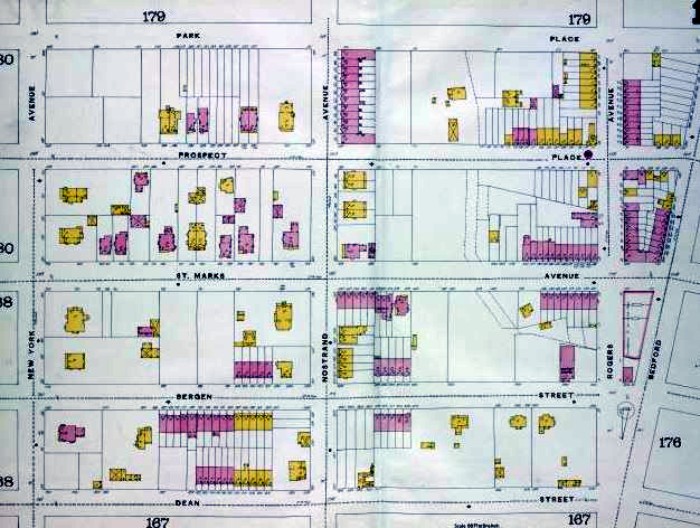
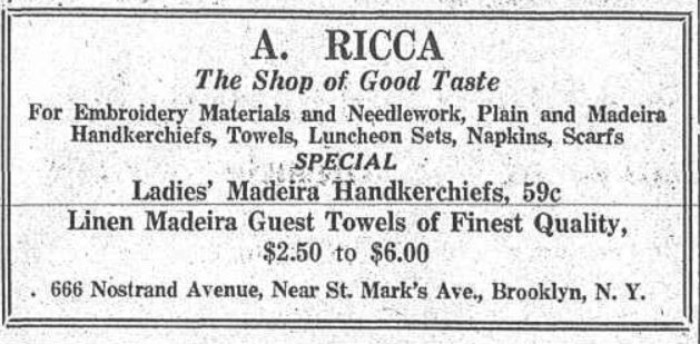
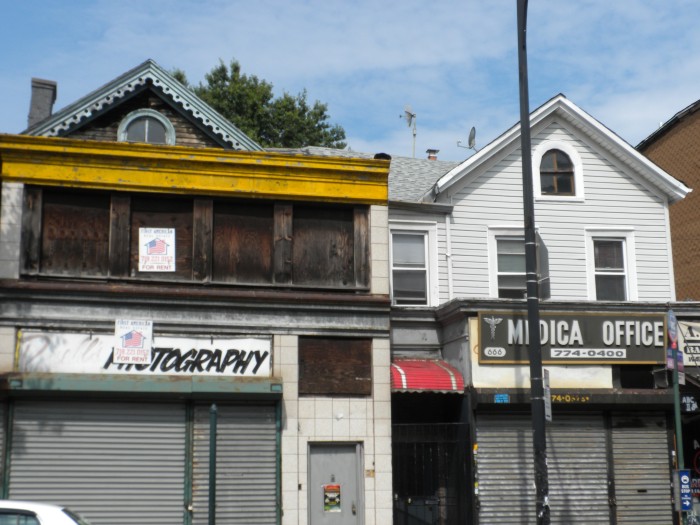
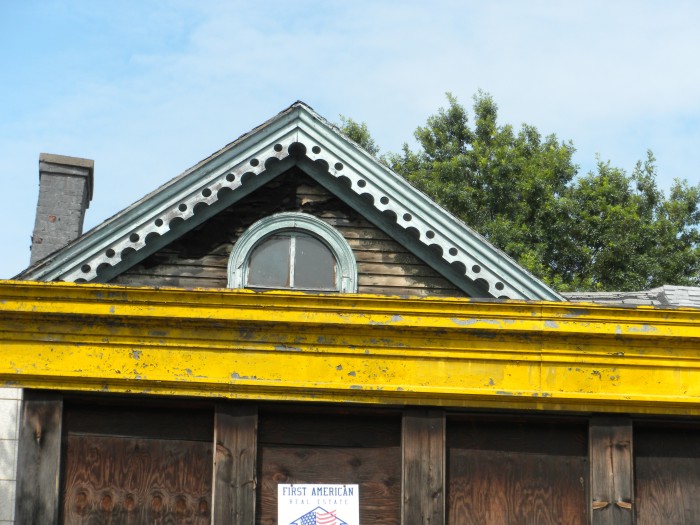

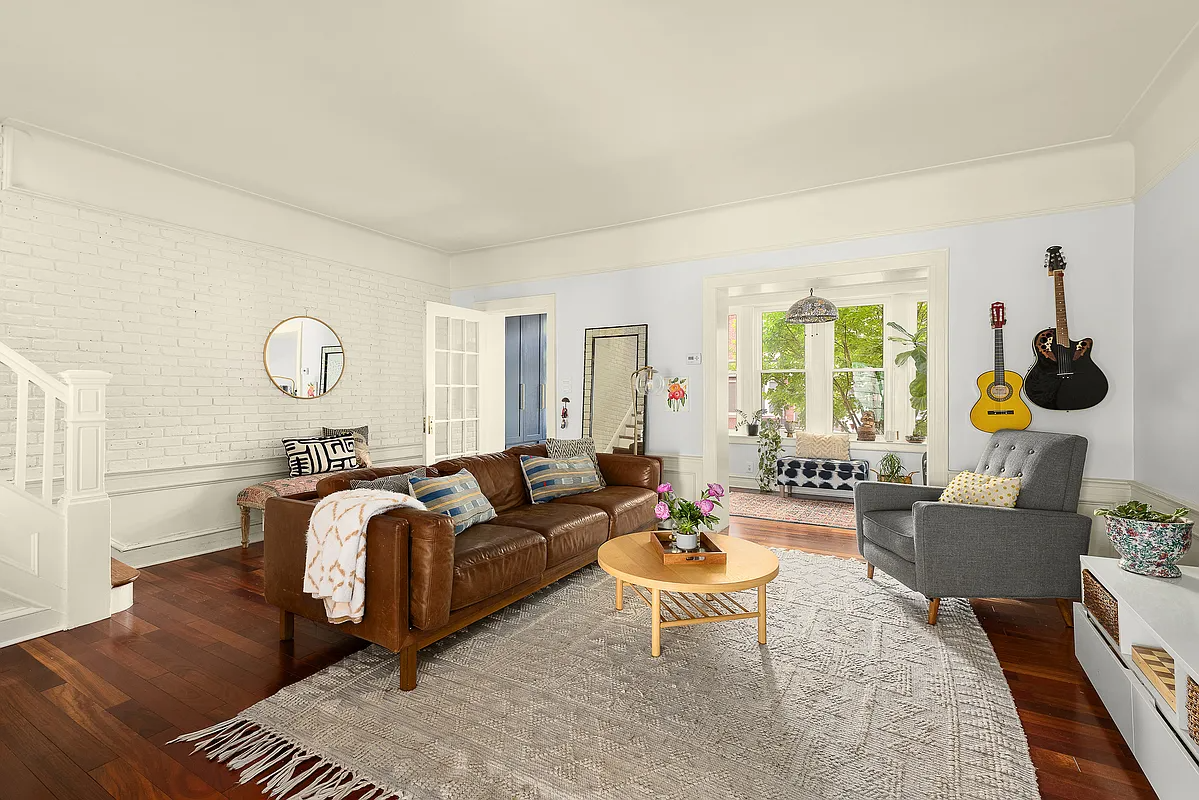
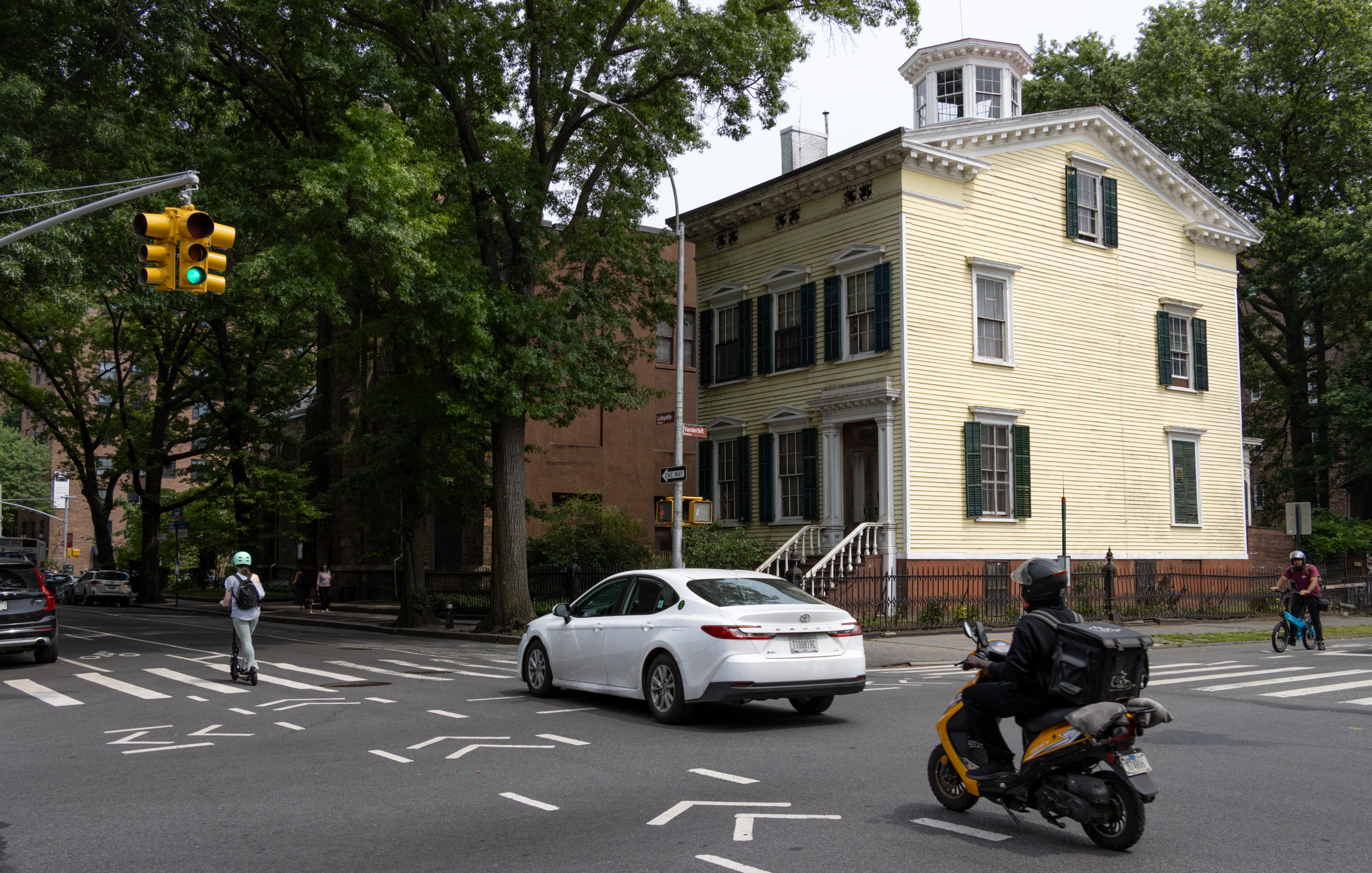


What's Your Take? Leave a Comment